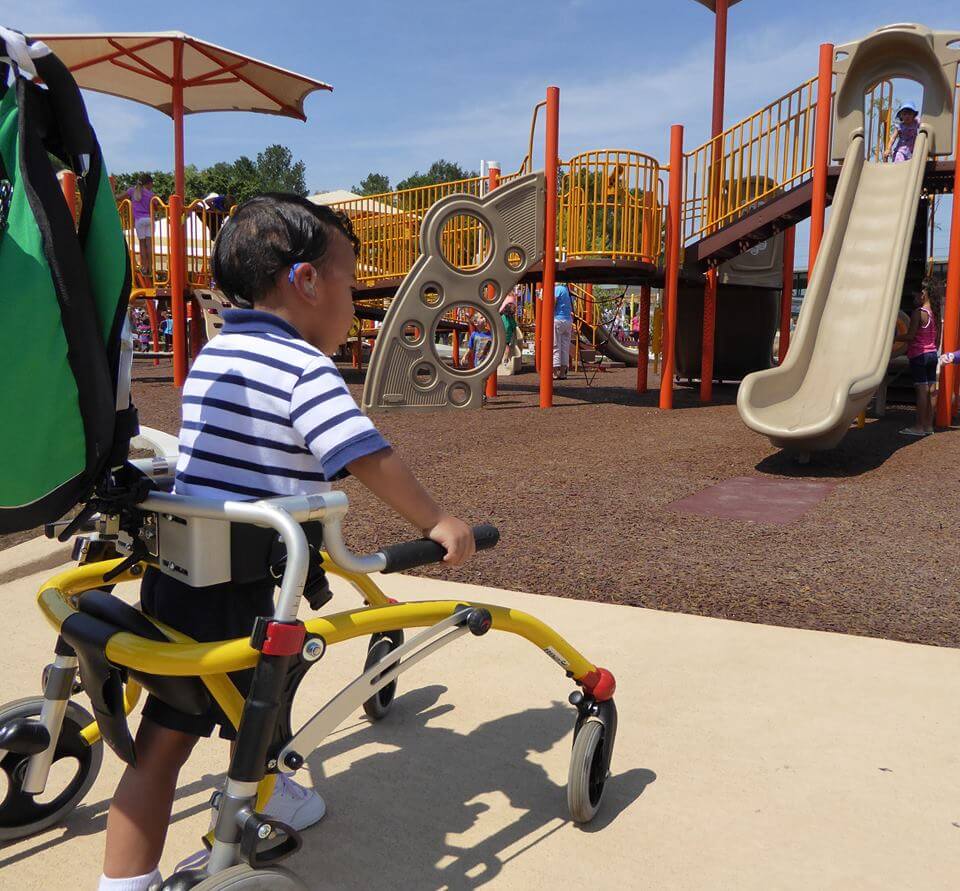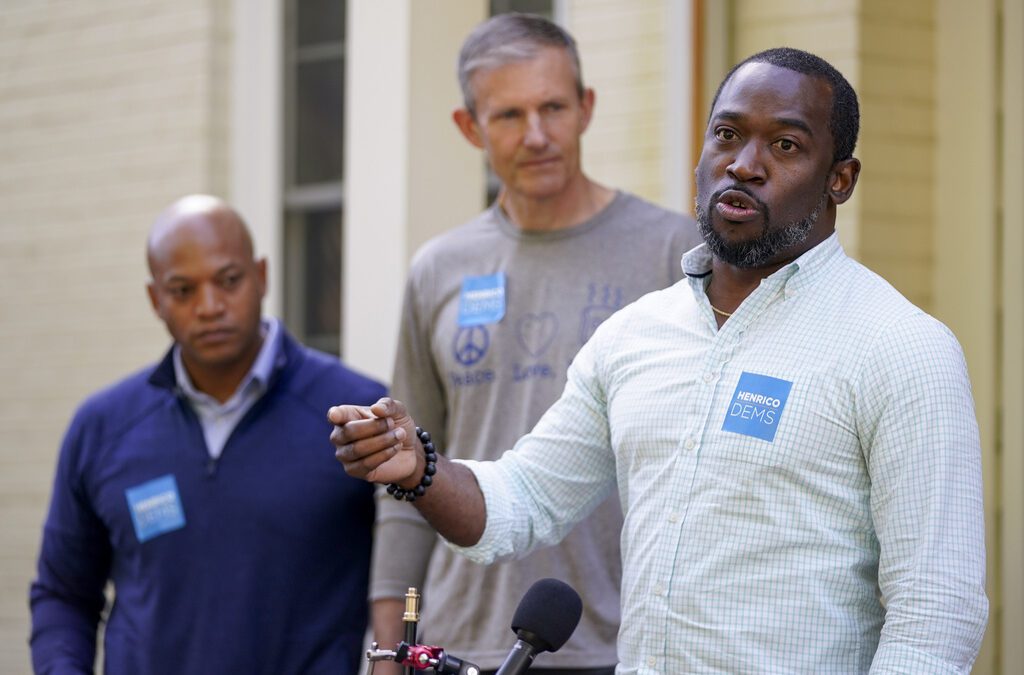
From parks to public buildings, infrastructure in the Commonwealth was often built without disabled residents in mind. The ARP can help with that.
RICHMOND – Texas Beach is a five mile stretch of woodland trails and scenic vistas, sandwiched between Maymont Park and the James River in the heart of Richmond. But although the trailhead is less than two miles from Broad Street, the park is largely inaccessible to residents with disabilities.
That’s because reaching the trail requires descending a series of steep wooden staircases and poorly maintained gravel trails.
That makes the park area impossible to reach to wheelchair users. It also causes problems for those who have motor issues or who use canes and walkers. But Texas Beach isn’t the only part of Virginia that’s currently inaccessible for people with disabilities.
Accessibility in the Commonwealth
Accessibility issues extend to every facet of life in the Commonwealth. According to a study by the Virginia Department of Housing and Community Development, 11.2% of Virginians living outside of institutional care facilities have one or more disability.
People living with mobility challenges account for over half of those. But there are also hundreds of thousands of Virginians living with hearing, vision, and cognitive disabilities. That means while features such as ramps and wide hallways help, no solution is truly universal.
The Virginia Department of Transportation (VDOT) does provide one tool for anyone concerned about accessibility in public spaces. It’s called the VDOT ADA Curb Ramp Condition Map, and it rates different areas for their upkeep of the curb cuts people with disabilities use to get on and off of sidewalks.

However, the map has serious holes where VDOT hasn’t gathered data. Those holes include the entirety of the cities of Richmond, Newport News, and Norfolk.
What Counts As Accessible?
When it comes to public infrastructure and outdoor recreation areas like Texas Beach, it’s unclear what “accessible” really means. According to the U.S. Department of Justice, “when parks and recreation facilities are built or altered, they must comply with the ADA Standards for Accessible Design.”
Those standards include “features such as accessible parking spaces, routes, toilet facilities, public telephones, and spectator seating areas.”
The James River Park System does maintain several accessible areas. However, because of its disconnected nature, one section might be miles from the nearest accessible park entrance.
But that doesn’t necessarily put these parks in violation of the ADA. That’s because the government doesn’t require older public spaces to provide access for people with disabilities if the infrastructure in that place is older than the Act itself.
Infrastructure Limits Mobility Device Users
Evan VanDyke is a wheelchair user and disability advocate in Richmond. He says that contrary to popular perception, using a wheelchair opens up new possibilities for him.
“The way I use a wheelchair is, basically, it gives me more independence and confidence to go out.” VanDyke said. “Before, when I was walking long distances, it would create a lot of anxiety. A lot of worry. A lot of hesitancy to even go out and do things.”
But that freedom can be limited by absent or poorly maintained accessibility infrastructure. VanDyke said while his wheelchair generally allows him to travel further unassisted and with less pain, that independence can be cut short by poor infrastructure.
“The curb cuts where a wheelchair can come up on a sidewalk, if there was a cut then a lot of times they weren’t properly maintained,” VanDyke said. “You would literally have to pop a wheelie, do something unsafe, or have to have someone with you to help you get up over it.”
Building Accessibility in Virginia
A few miles away away from Texas Beach is a playground that embodies everything accessibility advocates are asking for. The playground is called Park365, and is located in Richmond’s Southside region. Soar365, a nonprofit that provides recreational programs and other services to Virginians living with disabilities, maintains the park.
Andrea Siebentritt, a spokesperson for the organization, says that by setting out in advance to build an inclusive space, they avoided the pitfalls of setting up accommodations after the fact.
“It’s not about making something kind of work later,” Siebentritt said. “It’s about being thoughtful in the initial construction and design.”
Park365 features structures designed specifically for wheelchair accessibility, accessible fitness equipment, and charging stations for electric wheelchairs.
According to Siebentritt, the model Park365 uses can be applied to other outdoor recreation areas.
“When outdoor recreation areas are accessible for individuals with disabilities and also designed for those without disabilities, that encourages the entire community to be outside, active and playing together,” Siebentritt said.
Designing With Accessibility in Mind
Looking ahead, VanDyke said there’s one simple thing designers can do to ensure accessibility in the planning stage.
“My recommendation would be for them to get in a wheelchair and try to navigate around,” said VanDyke.
VanDykes says that would make designers more aware of where accessibility infrastructure might be necessary.
For Siebentritt, intentionally designing accessible spaces is something that can benefit everyone who uses public spaces.
“The advantages to planning in advance for accessibility is that you end up with a park or space that is truly meant for everyone, whether individuals have disabilities or not,” Siebentritt said.
ARP Offers ‘Desperately Needed’ Support
Both community level supports and services within the home are important components to making Virginia accessible for people with disabilities.
Many of these long-term support services for people with disabilities get funding through Home and Community Based Services (HCBS). Those services got a funding boost this year thanks to the Biden administration’s American Rescue Plan.
In a statement, the American Association of People with Disabilities say the ARP funding was “desperately needed.”
They continued, “This funding will make it possible for more people with disabilities to live independently in their homes and receive needed support in community, rather than institutions that have become even more deadly during the pandemic.”
The ARP also incorporated aspects of a proposal advanced earlier this year by the Senate Special Committee on Aging.
According to a letter to the Biden administration signed by Virginia senators Mark Warner and Tim Kaine, the proposal sought to encourage the administration to make “an investment [that] would support people with disabilities, older adults and family caregivers with the supports they need to live the lives they wish to lead.”
Building Accessibility Equitably
When it comes to building new public infrastructure, VanDyke says equity is an important component to consider in addition to access
“The area around my apartment now has really nice sidewalks because a Whole Foods moved in. Great, that’s better for me. But I live in an area with Whole Foods.” said VanDyke. “I go to an area like Southside, and I’m like, ‘Wow, there’s no sidewalks here.”
According to a 2003 study by the US Bureau of Transportation Statistics, at that time over 500,000 disabled people were confined to home as a result of lack of transportation. That can be because of a number of factors, including inadequate pedestrian accommodations and lack of public transportation options.
Those problems can be amplified by racial inequities in transportation infrastructure, as a Harvard study found. The study showed that while Black Americans rely on public transportation at a rate four times higher than white Americans, Black and low-income riders overall paid higher fares per mile.
Overall, Black Americans with disabilities are more likely than their white counterparts to live below the poverty line, and poverty can worsen pre-existing inequities in accessibility for those living with disabilities. That’s according to a study by the National Disability Institute.
But without more complete data on the Commonwealth’s accessibility infrastructure, it’s hard to know which communities are most in need of updates to their public spaces. When the government does invest in infrastructure for people with disabilities, VanDyke says, that investment must be equitably distributed.
“Infrastructure, especially in public areas, should not depend on the property value surrounding it,” VanDyke said.
Jakob Cordes is a freelance reporter for Dogwood. You can reach him at [email protected].
JOIN THE CONVERSATION: Sign Up For Dogwood’s Newsletter
Politics

Biden administration bans noncompete clauses for workers
The Federal Trade Commission (FTC) voted on Tuesday to ban noncompete agreements—those pesky clauses that employers often force their workers to...

Democratic shakeup in Virginia primaries for governor, lieutenant governor
Richmond Mayor Levar Stoney quit his bid for governor and jumped into the race to be the Democratic nominee for lieutenant governor. The race for...
Local News

Virginia verses: Celebrating 5 poetic icons for National Poetry Month
There’s no shortage of great writers when it comes to our commonwealth. From the haunting verses of Edgar Allan Poe, who found solace in Richmond's...

Join the fun: Recapping Family Literacy Night’s storybook adventures
When’s the last time you read a book aloud with a loved one? If it’s difficult to answer that question, then maybe it’s time to dust off that TBR...







